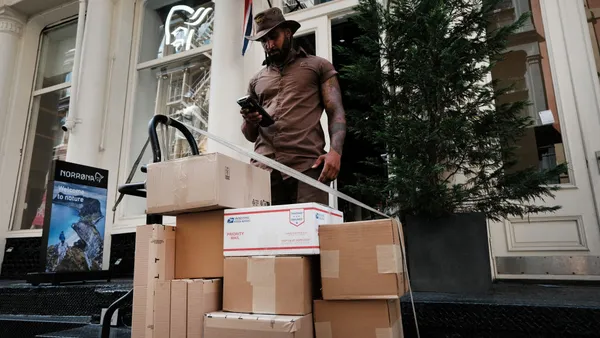Dive Brief:
- Rules to regulate drones may take longer to finalize than the Federal Aviation Administration (FAA) originally anticipated, The Wall Street Journal reports.
- Trade groups predict it could take the FAA until 2022 to complete its regulatory timeline, which includes drafting rules for flying over small crowds or past the line of sight and requirements for drone identification.
- So far, technical challenges, a lack of consensus over air traffic management best practices, industry competition and financing concerns are the chief barriers to speedy regulation.
Dive Insight:
Drones have taken off in the supply chain, as a wide range of pilot projects — on applications ranging from warehouse scans to healthcare deliveries — in recent months highlighted the technology's potential benefits.
But if the challenges described by The Wall Street Journal persist, it may take years before the industry sees some of the most popular applications — such as parcel deliveries — become commonplace.
The FAA in May announced it had selected 10 participants for its "Integration Pilot Program," where cities, facilities and universities could test new applications despite under-developed regulations. So far, tests in these cities have seen drones used for popsicle deliveries and safety inspections, among other use cases.
The pilot program, the FAA said in a statement at the time, was meant to help the agency gather data to develop the best rules of use for the technology.
"Over the next two and a half years, the selectees will collect drone data involving night operations, flights over people and beyond the pilot’s line of sight, package delivery, detect-and-avoid technologies and the reliability and security of data links between pilot and aircraft," the FAA said.
But rather than add clarity to new rules, the high variability of new technology and its use cases has led to confusion over the best path forward, as the agency attempts to appease all stakeholders, The Wall Street Journal reports.














